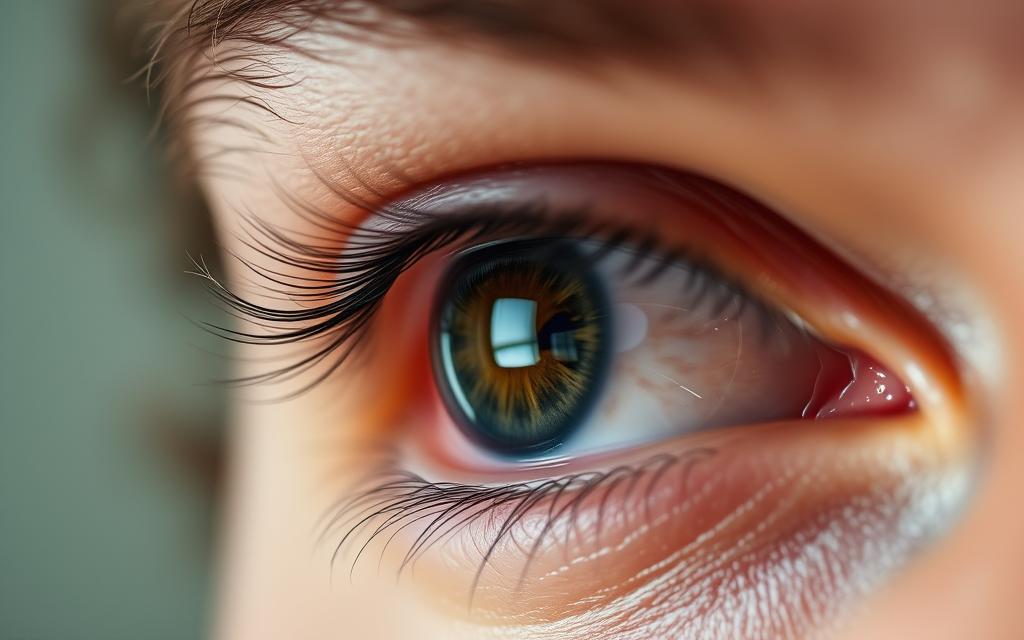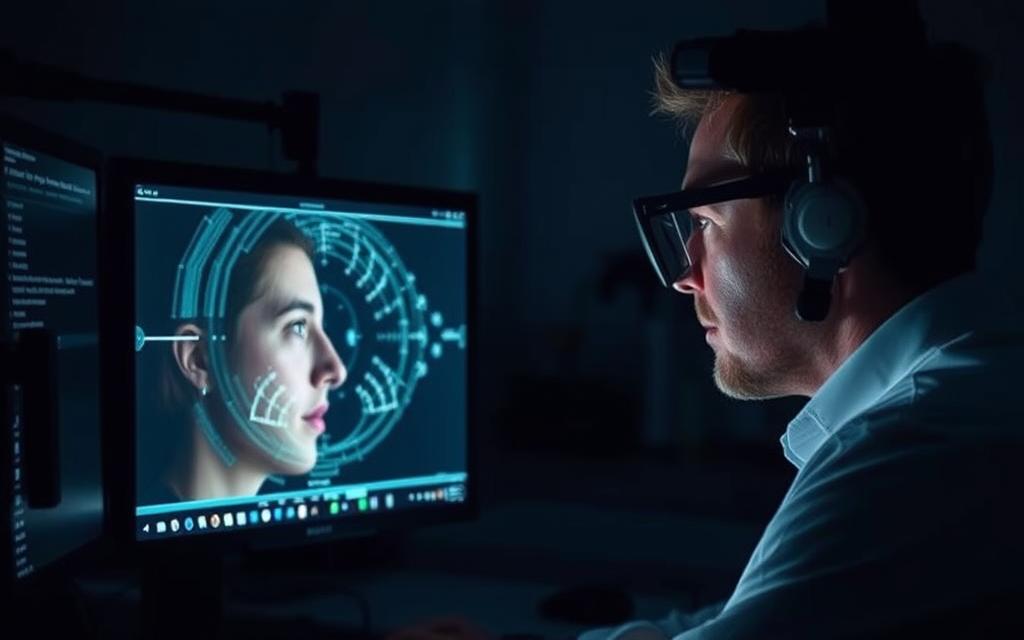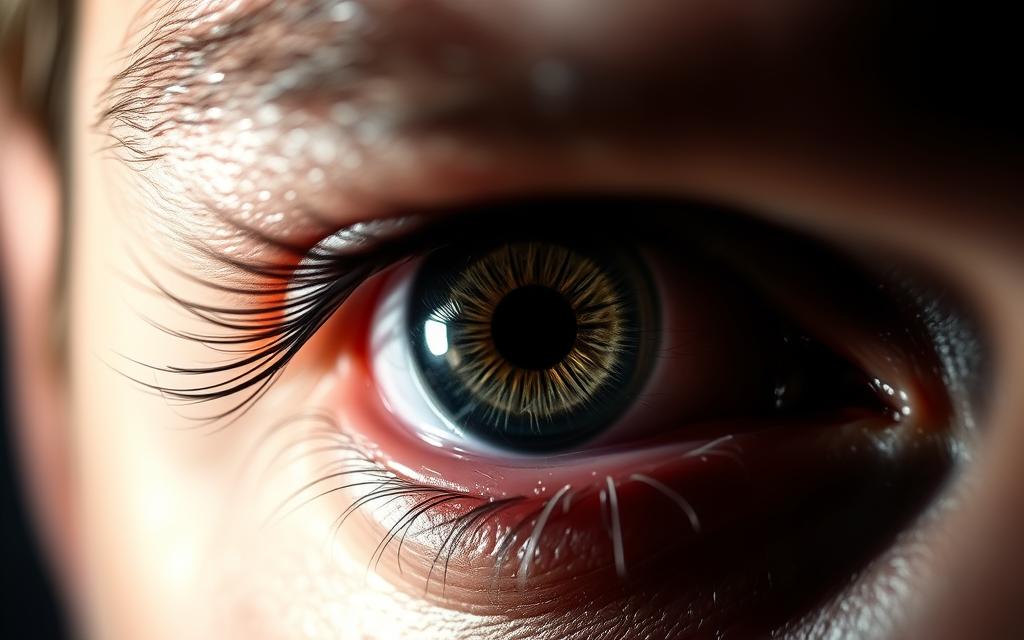What if you could tell when someone isn’t being truthful—just by observing their behavior? The idea of lie detection has captivated audiences for decades, from crime dramas to everyday conversations. Today, methods rooted in neuro-linguistic programming (NLP) offer a fresh perspective on this age-old challenge.
This article explores how specific techniques analyze verbal cues, body language, and even eye movements to identify dishonesty. While pop culture often oversimplifies these strategies, research reveals both promising insights and limitations. For example, many people associate rapid eye shifts with deception, but studies show context matters far more than a single gesture.
We’ll break down how NLP principles apply to real-world scenarios, separating myths from evidence-based practices. You’ll learn why some experts advocate for these methods while others urge caution. Whether you’re curious about workplace interactions or personal relationships, understanding the pros and cons can sharpen your observational skills.
Written in plain language for readers across the U.S., this guide balances scientific findings with practical takeaways. Let’s dive into what works—and what doesn’t—in the evolving world of truth-seeking strategies.
Introduction to Neuro-Linguistic Programming and Lie Detection
Imagine uncovering hidden truths by analyzing how someone communicates. This idea drives neuro-linguistic programming, a method linking language patterns to mental processes. Developed in the 1970s, it focuses on how people process experiences through three representational systems: visual (sight), auditory (sound), and kinesthetic (touch).

What the Public Thinks vs. What Science Shows
Many believe these techniques can spot lies by tracking eye movements or speech habits. Pop psychology often claims looking left means creating a story, while looking right indicates recalling facts. However, research reveals this isn’t foolproof. Controlled studies show individual differences matter more than universal rules.
Testing the Theories
Scientists use experiments with participants to test if these methods work. In one study, people answered questions truthfully or deceptively while their responses were recorded. Results showed no consistent link between eye direction and honesty. Instead, factors like stress or personality played bigger roles.
While the approach offers intriguing ideas about telling truth, experts urge caution. Relying solely on body language can lead to wrong conclusions. Combining observation with other strategies often yields better results.
The Concept Behind NLP Eye Movements
Have you ever wondered if the direction someone looks reveals their honesty? Many trainers claim our eye movements act like a truth compass. When people glance upward and to the right, they’re supposedly inventing details. A shift to the left, however, might indicate genuine recall.

The Alleged Link Between Eye Movements and Lying
This theory stems from how our brains process information. Advocates suggest visual thinkers look upward when accessing mental images. Auditory types might gaze sideways while recalling sounds. Those fabricating stories could unconsciously break their usual patterns.
Workshops often teach these lying eye movements as reliable signals. For example:
- Upper-right glances = creating fictional scenarios
- Steady forward gaze = accessing factual memories
- Rapid side shifts = potential discomfort with the truth
Theoretical Foundations in NLP
The approach ties into sensory-based thinking models. Practitioners map eye movement directions to specific mental processes:
- Visual construction (up-right)
- Auditory memory (left-side)
- Kinesthetic feeling (down-right)
However, critics highlight three key issues:
- Cultural differences in eye contact norms
- Individual variations in thinking styles
- Lack of peer-reviewed validation
While the concept remains popular in some circles, researchers urge caution. The next section explores scientific attempts to verify these patterns under controlled conditions.
Research Studies Examining Lie Detection Techniques
Scientists have spent decades testing whether body language reveals hidden truths. Controlled experiments and real-world observations aim to separate fact from fiction in deception research. Let’s explore what rigorous studies reveal about eye patterns and honesty.

Laboratory Investigations and Controlled Experiments
In lab settings, researchers often ask participants to either lie or share truths while tracking their responses. Cameras record eye movement patterns, blinking rates, and gaze direction. One notable study from the University of Michigan found no consistent link between specific eye shifts and deception across 200 subjects.
Key findings from multiple studies include:
- Truth-tellers and liars both exhibit varied gaze behaviors
- Stress levels impact eye contact more than honesty
- Cultural background influences baseline movement patterns
Field Studies and High-Stakes Scenarios
Real-world research analyzes situations where consequences matter. A 2018 analysis of political press conferences examined 50 hours of footage. Results showed speakers maintained steady eye contact during both truthful statements and strategic omissions.
High-pressure environments introduce variables rarely seen in labs:
- Adrenaline affects pupil dilation and blink frequency
- Public figures train to control nonverbal cues
- Contextual clues outweigh isolated eye behaviors
While some differences emerge between lab and field data, both approaches highlight the complexity of reading honesty through physical cues alone.
What Our Eyes Reveal During Conversations
Many believe our eyes reveal hidden truths when we speak. Trainers often highlight specific eye movement patterns as potential honesty indicators. These techniques suggest that where someone looks can signal whether they’re recalling facts or constructing stories.

Decoding Visual Clues
Popular workshops teach these common indicators:
- Glancing upward-right: Creating new mental images
- Looking left-side: Accessing remembered sounds
- Downward gaze: Processing emotions or physical sensations
Practitioners claim consistent patterns emerge when people switch between truth and fabrication. For instance, someone might normally look left when remembering actual events but shift right when inventing details.
Real-world training examples show how this works. Security professionals might watch for sudden changes in a suspect’s typical eye movements during questioning. Sales teams sometimes use these observations to gauge client authenticity.
However, multiple studies challenge these assumptions. University of Hertfordshire research found no consistent link between specific eye directions and deception across 50 participants. Cultural differences in eye contact norms further complicate interpretations.
While these techniques offer intriguing possibilities, experts recommend using them as one tool among many. Observing verbal consistency and physical tension often provides clearer truth lie signals than eye behavior alone.
Pros of Implementing NLP Techniques for Lie Detection
Could learning to spot subtle cues actually improve how we connect with others? Many practitioners argue these methods offer unexpected benefits beyond detection alone. While scientific support remains debated, structured training in observational skills can sharpen everyday interactions.

Building Bridges Through Observation
In workplaces, teams using these approaches often report clearer dialogue. Managers learn to notice mismatches between words and body language, prompting gentler follow-up questions. Couples sometimes find value in discussing telling truth patterns to reduce misunderstandings.
Key advantages include:
- Heightened awareness of verbal and nonverbal information
- Tools for addressing sensitive topics without confrontation
- Shared frameworks for discussing honesty in relationships
Though not a lie detector, this psychology-inspired work encourages active listening. One study found 68% of trainees felt better equipped to handle tough conversations. As one coach noted, “The real truth isn’t about catching lies—it’s about creating spaces where people work toward openness.”
For those rebuilding trust after betrayal, these skills can complement deeper emotional training. While no substitute for professional help, many practitioners find value in blending observation techniques with conflict resolution strategies.
Cons and Limitations of NLP in Lie Detection
Can a sideways glance really expose dishonesty? While eye-tracking methods seem intriguing, mounting research questions their reliability. Multiple studies reveal significant gaps between theory and real-world performance in deception detection.

Lack of Scientific Support
A landmark courtroom study analyzed 500+ testimonies, finding no meaningful link between eye movements and factual accuracy. Participants asked to lie often maintained steady gazes, while truth-tellers frequently glanced away due to nervousness. This contradicts popular claims about directional eye cues indicating deception.
Key issues emerge from the data:
- No universal patterns across diverse populations
- Stress responses mimic supposed “lying tells”
- Cultural norms heavily influence baseline behaviors
Ethical Concerns and Practical Drawbacks
Labeling someone dishonest based on unverified methods carries serious risks. Security professionals report false accusations when relying solely on programming-inspired techniques. One training facility abandoned these methods after 40% of practice scenarios misidentified truthful statements as lies.
Real-world challenges include:
- Overconfidence in observational “hacks”
- Legal implications of unreliable assessments
- Damage to personal/professional relationships
While understanding body language has value, treating it as a lie-detection silver bullet often backfires. Experts recommend combining multiple verification strategies rather than trusting fleeting eye movements.
Comparing NLP Techniques with Traditional Lie Detection Methods
How do modern observation methods stack against established truth-checking tools? While some swear by body language analysis, others rely on machines measuring physiological responses. Let’s explore how different approaches tackle the same challenge.
Behavioral Analysis vs. Polygraph Testing
Neurolinguistic programming focuses on subtle cues like eye movement patterns and speech inconsistencies. Practitioners analyze shifts in gaze direction or vocabulary choices as potential indicators. Traditional polygraphs, however, track heart rate and sweat levels during questioning.
Recent studies reveal key differences:
- Polygraphs measure stress responses, not deception itself
- Behavioral analysis requires interpreting context-specific signals
- Both methods produce results influenced by cultural norms
A 2022 University of Chicago research project compared these techniques in workplace investigations. Polygraphs achieved 72% accuracy in controlled settings, while NLP-based observations scored 65%. However, combining both methods boosted reliability to 84%.
Ethical concerns differ too. Polygraph use faces legal restrictions in many states, whereas observational approaches carry risks of misinterpretation. For those facing relationship doubts, understanding these limitations proves crucial.
While neither method guarantees perfect detection, each offers unique insights. Security experts often blend multiple strategies for balanced assessments. The key lies in recognizing that human behavior resists simple categorization.
Practical Applications in Modern Settings
Workplaces are discovering innovative ways to foster trust through communication strategies. Many companies now blend behavioral observation with structured training to enhance team dynamics. These methods help people recognize mismatches between words and actions, creating healthier work environments.
Organizational Training and Personal Development
Forward-thinking firms use these techniques to strengthen leadership and collaboration. For example, sales teams practice identifying subtle cues during client negotiations. Managers learn to ask clarifying questions when body language contradicts verbal claims.
Key applications include:
- Conflict resolution workshops addressing skills gaps
- Role-playing scenarios to improve communication accuracy
- Custom systems tracking patterns in team interactions
In personal growth contexts, coaches help people build self-awareness. One program teaches individuals to align their speech with authentic intentions. Participants report feeling more confident during high-stakes conversations.
Some organizations integrate eye-tracking systems with traditional feedback tools. While not foolproof, this combined approach helps teams spot inconsistencies in group discussions. A tech startup reported 30% faster project completion after implementing these training modules.
From boardrooms to therapy sessions, these strategies empower people to navigate complex social landscapes. When used ethically, they become tools for connection rather than suspicion.
Alternative Approaches and Emerging Research
The quest to understand honesty is entering uncharted territory with cutting-edge technologies. While traditional methods focus on observable behaviors, new tools analyze subtle biological signals invisible to the naked eye.
Innovative Methods Beyond Established Systems
Researchers now explore thermal imaging to detect blood flow changes during deception. A 2023 study found liars often show temperature shifts around their eyes and nose. Other teams use:
- Voice stress analysis software measuring micro-tremors
- EEG scans tracking millisecond brain response delays
- Machine learning models analyzing speech patterns
These approaches address limitations of older systems by focusing on involuntary physiological indicators. Unlike subjective observations, they generate quantifiable data for comparison.
Future Directions in Truth Verification
Emerging research combines multiple sensors for holistic assessments. Scientists at Stanford recently tested glasses that track eye movement, pupil dilation, and blink frequency simultaneously. Early results with 150 participants showed 79% accuracy in identifying fabricated stories.
Key areas of exploration include:
- AI systems recognizing micro-expressions across cultures
- Portable devices measuring chemical changes in breath
- Virtual reality scenarios testing honesty under pressure
While no method guarantees perfection, these advances could revolutionize how we interpret truthfulness. The future lies in layered approaches that respect individual differences while reducing human bias.
Conclusion
The search for reliable truth verification methods continues to evolve. While neurolinguistic programming offers intriguing ideas about eye movement patterns and speech analysis, research reveals mixed results. Studies show some support for observing behavioral shifts, but no universal formula exists.
Key differences emerge between popular claims and scientific evidence. Though trainers often emphasize directional eye cues, controlled experiments find individual habits outweigh standardized rules. Cultural norms and stress responses further complicate interpretations.
On a practical basis, these techniques work best as conversation starters rather than lie detectors. They encourage closer listening and awareness of mismatched signals. However, ethical concerns arise when treating body language as definitive information about telling truth.
Stay curious but critical. Combine observational skills with verified data sources, especially in high-stakes situations. As new technologies emerge, maintaining this balanced approach helps separate promising innovations from overhyped shortcuts.
